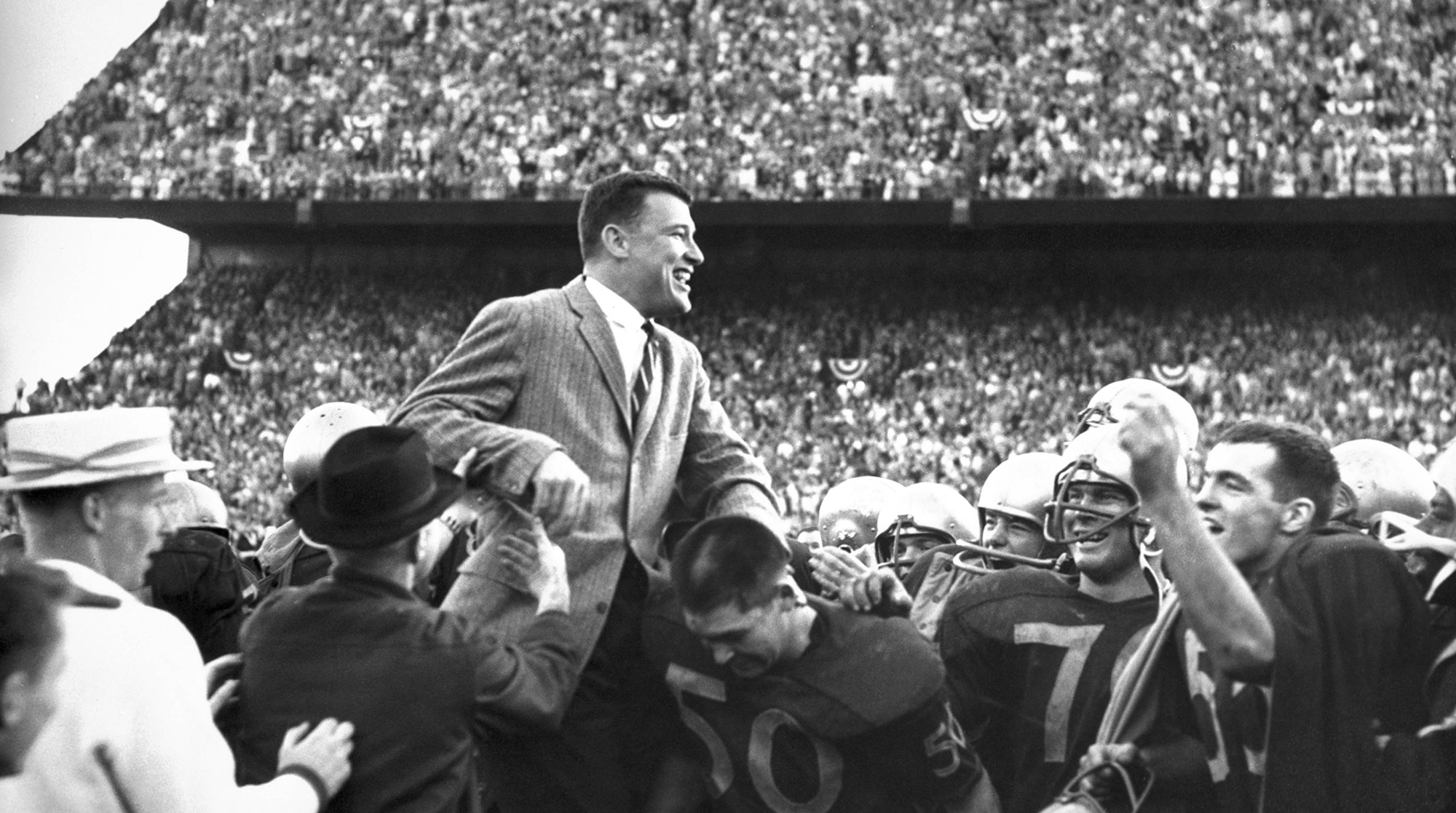

According to the Associated Press, the University of Minnesota was the number one college football team in 1960. There is just one problem with this ranking—it was made prior to the last game of the Gophers’ season, the 1961 Rose Bowl.
In that contest, the top-ranked Gophers were the favorites to beat an upstart team from the Pacific Northwest—the University of Washington—even though the Huskies had trounced Wisconsin just a year before in the Rose Bowl.
Now the Huskies were back in Pasadena under their young coach Jim Owens, a disciple of legendary football coach Bear Bryant. When Owens took over in 1957, he saw that the team needed a new level of intensity. Among his extreme conditioning drills was one the team called the Death March. Players started in a three-point stance, waited for Owens’ whistle, ran 15 yards, dropped into their stance and did it again. The sprints continued up and down the field about 15 times until almost no one was left standing.
In those days coaches thought drinking water during practice caused cramps, so players couldn’t hydrate themselves despite 90 degree temperatures. When the Death March was over, most suffered severe cramps and seven players had to be taken to University Hospital.
According the W. Thomas Porter, ’59, author of the new book about the 1960s team, A Football Band of Brothers, the Death March was a defining moment for the program. “Washington’s reputation for toughness, tenacity and endurance that started in 1957 would become the foundation for a very successful football program,” he writes.
But the nation wasn’t convinced that the Huskies were all that tough during the 1960 season, despite their 9–1 record. On Jan. 2, Minnesota, with an 8–1 record, was a seven-point favorite, perhaps because the Huskies were so battered. Quarterback Bob Schloredt, ’63, had been out six games with a broken collarbone. The old man of the team, 26-year-old running back Don McKeta, ’62, suffered from a cut in his right calf during the Apple Cup that required 10 stitches. Doctors examined fullback Jim Jones, ’64, and took out his appendix just two days before the game.
But the oddsmakers were wrong. Running back and kicker George Fleming, ’64, set the tone by a 17-yard punt return followed by kicking a 44-yard field goal (at that time the longest in Rose Bowl history), putting the Huskies on the scoreboard first. Schloredt orchestrated a 62-yard scoring drive in the second period. On a later drive, Schloredt scrambled for 31 yards and scored on a quarterback sneak from the one-yard line. Washington led 17–0 at the half and won the game 17–7, with Jones coming in on the final play despite his surgery.
The Huskies had just defeated the regular season champions, but AP wouldn’t change its poll system until 1965, when it moved the final vote to the conclusion of all bowl games. However, the Helms Foundation Poll, founded in 1936, waited until the outcome of the bowl contests and selected the 1960 Huskies as its national champions.
“Washington’s football program had risen from the ashes to fields of roses and a national championship,” writes Porter. But it would not get the recognition it deserved, and most Husky fans think Don James’ 1991 team was the first to achieve a national championship.
That should change thanks to Porter and the Legacy Weekend celebration planned around the UW-USC game on Sept. 29. The 1960 team will be recognized by the University as the program’s first football national champions and the current Huskies will wear “throwback” uniforms specially designed by Nike. Merchandise based on the 1960s design will also be available in local sports shops.
That same weekend, the athletics department plans to open its new Legacy Center, located on the east end of the Graves Annex, to showcase the players, coaches and memories that have shaped the traditions of Husky football.
“Many fans of today only remember the success of the James era,” says Porter. “The 1959 and 1960 teams laid the foundation of Husky football. They were the ones that turned Husky football around. When you talk about the Husky tradition—endurance, passion, pride, tenacity and toughness—it all started in the late 1950s.”